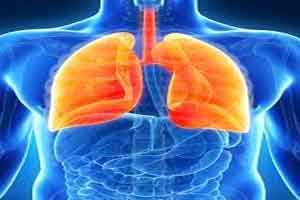- Home
- Editorial
- News
- Practice Guidelines
- Anesthesiology Guidelines
- Cancer Guidelines
- Cardiac Sciences Guidelines
- Critical Care Guidelines
- Dentistry Guidelines
- Dermatology Guidelines
- Diabetes and Endo Guidelines
- Diagnostics Guidelines
- ENT Guidelines
- Featured Practice Guidelines
- Gastroenterology Guidelines
- Geriatrics Guidelines
- Medicine Guidelines
- Nephrology Guidelines
- Neurosciences Guidelines
- Obs and Gynae Guidelines
- Ophthalmology Guidelines
- Orthopaedics Guidelines
- Paediatrics Guidelines
- Psychiatry Guidelines
- Pulmonology Guidelines
- Radiology Guidelines
- Surgery Guidelines
- Urology Guidelines
A case of Cavitary lung lesion suspicious for malignancy reveals Mycobacterium xenopi

Dr.Sumit Fogla and associates have reported a case of Cavitary lung lesion suspicious for malignancy which reveals infection by Mycobacterium xenopi.
The authors report the case of a 68-year-old gentleman who presented with musculoskeletal chest pain which appeared suddenly when he bent over with his dog. The chest pain was localized to the left lower chest and increased with movement and deep breathing. The patient did not complain weight loss, night sweat, fever or chill. He complained ofmild cough, with expectoration of whitish mucus.
Imaging revealed cavitary chest lesion in the right upper lobe, which was initially suspected to be lung cancer. The patient had a 50-year-old history of smoking 2 packs per day. PET CT imaging did not reveal any specific activity. Needle biopsy and bronchoalveolar lavage, however, did not reveal any malignant cells. Rather, necrotic tissues were observed.
A wedge resection of the lung mass was performed. No common organisms or fungi could be grown. However, acid fast bacilli were observed in clumps. The morphology hinted towards non-tuberculous mycobacterial organism(s). Molecular studies revealed infection with Mycobacterium xenopi. The patient was started on an anti-tuberculous regimen of INH, rifampicin, ethambutol and PZA, withpyridoxine. The patient is a Vietnam veteran and complained of exposure to dust from a bird’s nest and asbestos exposure in childhood, but no specific exposure to tuberculosis. The patient had an uneventful recovery post-surgery.He complained of some nausea after initiation of the antituberculous medications, but his pain subsided with time. The patient had diabetes, though specific reasons of compromise of immune status could not be pinpointed as causative of his nontuberculous mycobacterial lung infection.

Disclaimer: This site is primarily intended for healthcare professionals. Any content/information on this website does not replace the advice of medical and/or health professionals and should not be construed as medical/diagnostic advice/endorsement or prescription. Use of this site is subject to our terms of use, privacy policy, advertisement policy. © 2020 Minerva Medical Treatment Pvt Ltd